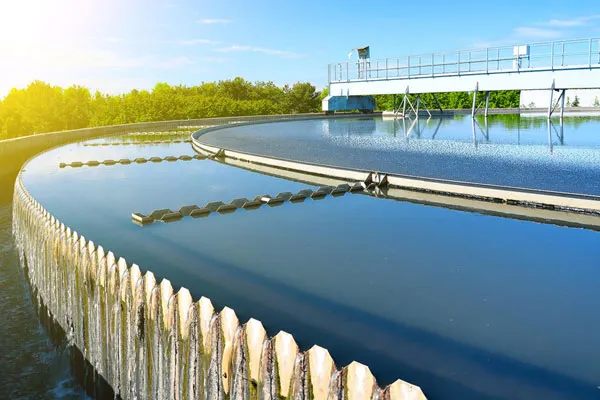Water scarcity is being driven by two converging phenomena: growing freshwater use and depletion of usable freshwater resources. Water use has been growing globally at more than twice the rate of population increase in the last century, and an increasing number of regions are reaching the limit at which water services can be sustainably delivered, especially in arid regions. Water scarcity will be exacerbated as rapidly growing urban areas place heavy pressure on neighboring water resources.
At the global level, 31 countries are already short of water and by 2025 there will be 48 countries facing serious water shortages. The UN has estimated that by the year 2050, 4 billion people will be seriously affected by water shortages. This will lead to multiple conflicts between countries over the sharing of water. Around 20 major cities in India face chronic or interrupted water shortages. There are 100 countries that share the waters of 13 large rivers and lakes. International accords that will look at a fair distribution of water in such areas will become critical to world peace. India and Bangladesh already have a negotiated agreement on the water use of the Ganges.
Water management, therefore, is the need of time. It is the management of water resources for the coming generations. It involves the activity of planning, developing, distributing and managing the optimum use of water resources. There are different methods through which water management preservation can be done, some of them are explained below.
Rainwater harvesting
Rainwater harvesting (RWH) is the collection and storage of rain, rather than allowing it to run off. Rainwater is collected from a roof-like surface and redirected to a tank, cistern, deep pit (well, shaft, or borehole), aquifer, or a reservoir with percolation. Dew and fog can also be collected with nets or other tools. Rainwater harvesting differs from stormwater harvesting as the runoff is collected from roofs, rather than creeks, drains, roads, or any other land surfaces. Its uses include watering gardens, livestock, irrigation, domestic use with proper treatment, and domestic heating. The harvested water can also be committed to longer-term storage or groundwater recharge.
Tamil Nadu was the first state to make rainwater harvesting compulsory for every building to avoid groundwater depletion. The scheme was launched in 2001 and has been implemented in all rural areas of Tamil Nadu. Posters all over Tamil Nadu including rural areas create awareness about harvesting rainwater. TN Govt site. It gave excellent results within five years, and slowly every state took it as a role model. Since its implementation, Chennai had a 50% rise in water level in five years and the water quality significantly improved. In Rajasthan, rainwater harvesting has traditionally been practiced by the people of the Thar Desert. Many ancient water harvesting systems in Rajasthan have now been revived. At present, in Pune, rainwater harvesting is compulsory for any new housing society to be registered.
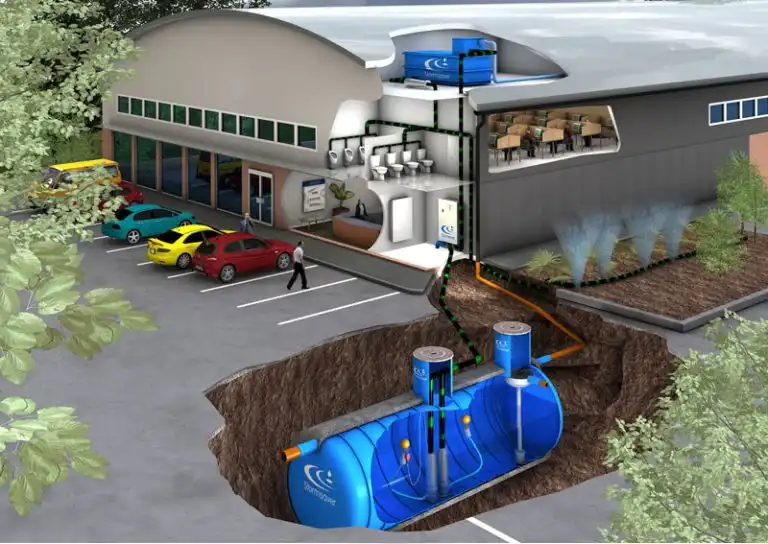
Groundwater recharge
Groundwater recharge is the enhancement of natural groundwater supplies using man-made conveyances such as infiltration basins, trenches, dams, or injection wells. Aquifer storage and recovery (ASR) is a specific type of groundwater recharge practiced with the purpose of both augmenting groundwater resources and recovering the water in the future for various uses.
Groundwater is recharged naturally by rain and snowmelt and to a smaller extent by surface water (rivers and lakes). Recharge may be impeded somewhat by human activities including paving, development, or logging. These activities can result in loss of topsoil resulting in reduced water infiltration, enhanced surface runoff and reduction in recharge. The use of groundwaters, especially for irrigation, may also lower the water tables. Groundwater recharge is an important process for sustainable groundwater management since the volume-rate abstracted from an aquifer in the long term should be less than or equal to the volume-rate that is recharged. Recharge can help move excess salts that accumulate in the root zone to deeper soil layers, or into the groundwater system. Tree roots increase water saturation into groundwater reducing water runoff. Flooding temporarily increases river bed permeability by moving clay soils downstream, and this increases aquifer recharge.
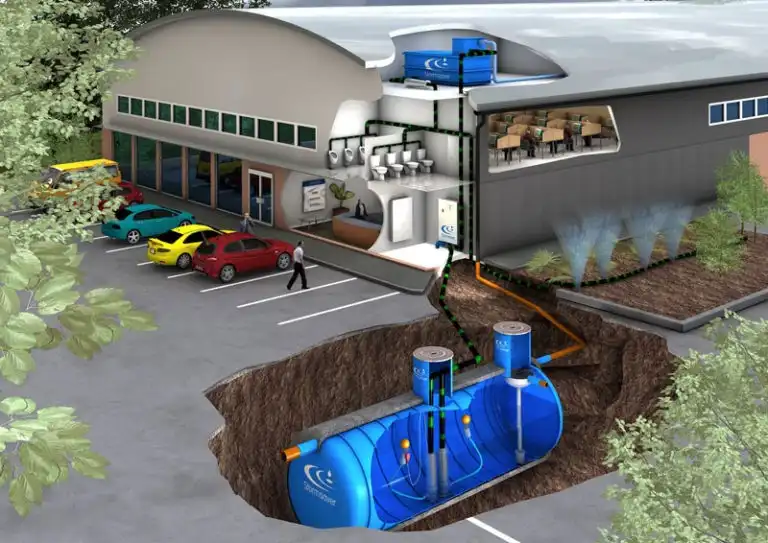
Artificial groundwater recharge
Groundwater levels are declining across the country as our withdrawals exceed the rate of aquifers to naturally replenish themselves, called recharge. One method of controlling declining water levels is by using artificial groundwater recharge. Artificial recharge is the practice of increasing the amount of water that enters an aquifer through human-controlled means. For example, groundwater can be artificially recharged by redirecting water across the land surface through canals, infiltration basins, or ponds; adding irrigation furrows or sprinkler systems; or simply injecting water directly into the subsurface through injection wells. Artificial groundwater recharge is becoming increasingly important in India, where the over-pumping of groundwater by farmers has led to underground resources becoming depleted. In 2007, on the recommendations of the International Water Management Institute, the Indian government allocated ₹1,800 crores to fund dug-well recharge projects (a dug-well is a wide, shallow well, often lined with concrete) in 100 districts within seven states where water stored in hard-rock aquifers had been over-exploited. Another environmental issue is the disposal of waste through water flux such as dairy farms, industrial, and urban runoff.
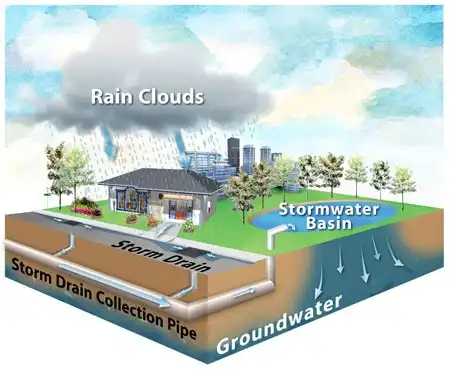
Drip irrigation
Drip irrigation is a type of micro-irrigation system that has the potential to save water and nutrients by allowing water to drip slowly to the roots of plants, either from above the soil surface or buried below the surface. The goal is to place water directly into the root zone and minimize evaporation. Drip irrigation systems distribute water through a network of valves, pipes, tubing, and emitters. Depending on how well designed, installed, maintained, and operated it is, a drip irrigation system can be more efficient than other types of irrigation systems, such as surface irrigation or sprinkler irrigation.
In the drip irrigation process, water and nutrients are delivered across the field in pipes called ‘dripper lines’ featuring smaller units known as ‘drippers’. Each dripper emits drops containing water and fertilizers, resulting in the uniform application of water and nutrients directly to each plant’s root zone, across an entire field. Drip irrigation system delivers water to the crop using a network of mainlines, sub-mains and lateral lines with emission points spaced along their lengths. Each dripper/emitter orifice supplies a measured, precisely controlled uniform application of water, nutrients, and other required growth substances directly into the root zone of the plant.
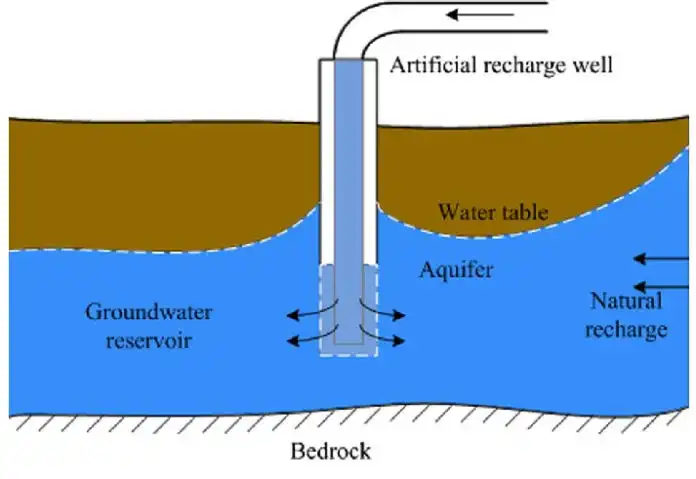
Greywater
Greywater is gently used water from your bathroom sinks, showers, tubs, and washing machines. It is not water that has come into contact with feces, either from the toilet or from washing diapers. Greywater may contain traces of dirt, food, grease, hair, and certain household cleaning products. While greywater may look “dirty,” it is a safe and even beneficial source of irrigation water in a yard.
Greywater is water from basins, baths and showers that is piped to a surge tank. The greywater is held briefly in the tank before being discharged to an irrigation or treatment system. The greywater can be diverted either by gravity or by using a pump. The surge tank can be any type of container that is suitable for holding (but not storing) the initial surge of water. The surge tank must be emptied completely each time greywater is dispersed to the irrigation or treatment system – greywater must not sit for extended periods of time in the tank. A gravity system can only be used when there is sufficient fall from the laundry/bathroom drain to the surge tank.
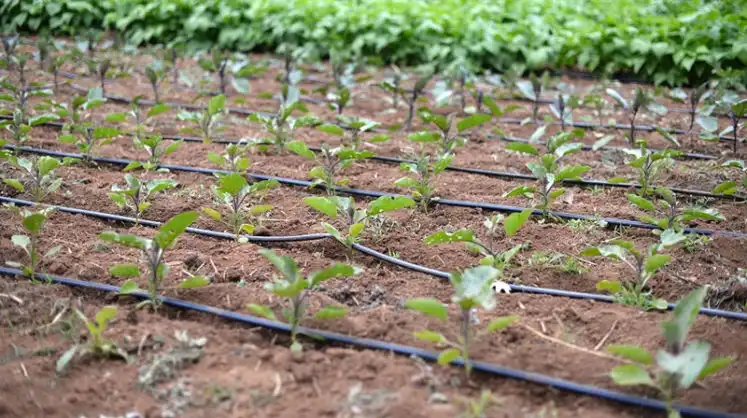
Sewage water treatment
Sewage treatment is the process of removing contaminants from municipal wastewater, containing mainly household sewage plus some industrial wastewater. Physical, chemical, and biological processes are used to remove contaminants and produce treated wastewater (or treated effluent) that is safe enough for release into the environment. A by-product of sewage treatment is a semi-solid waste or slurry, called sewage sludge. The sludge has to undergo further treatment before being suitable for disposal or application to land.
For most cities, the sewer system will also carry a proportion of industrial effluent to the sewage treatment plant which has usually received pretreatment at the factories themselves to reduce the pollutant load. If the sewer system is a combined sewer then it will also carry urban runoff (stormwater) to the sewage treatment plant. Sewage water can travel towards treatment plants via piping and in a flow aided by gravity and pumps. The first part of the filtration of sewage typically includes a bar screen to filter solids and large objects which are then collected in dumpsters and disposed of in landfills. Fat and grease are also removed before the primary treatment of sewage.
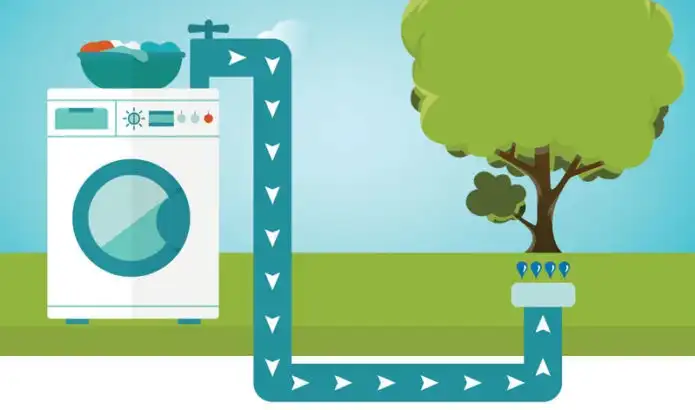
Conjunctive use
Conjunctive use is a catch-phrase for coordinated use of surface water and groundwater— literally going with the flow to maximize sufficient yield. Conjunctive use of groundwater and surface water in an irrigation setting is the process of using water from the two different sources for consumptive purposes. Conjunctive use can refer to the practice at the farm level of sourcing water from both a well and from an irrigation delivery canal, or can refer to a strategic approach at the irrigation command level where surface water and groundwater inputs are centrally managed as an input to irrigation systems.
The planned conjunctive use of groundwater and surface water has the potential to offer benefits in terms of economic and social outcomes through significantly increased water use efficiency. It supports greater food and fibre yield per unit of water use, an important consideration within the international policy arena given the critical concerns for food security that prevail in many parts of the world. At the resource level, groundwater pumping for irrigation used in conjunction with surface water provides benefits that increase the water supply or mitigate undesirable fluctuations in the supply (Tsur, 1990) and control shallow water table levels and consequent soil salinity.
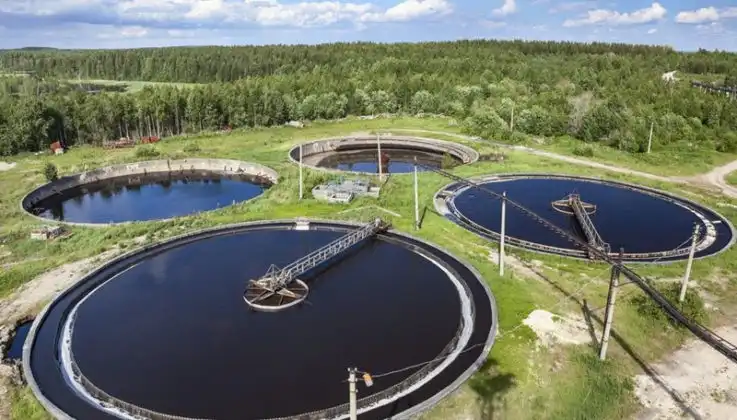
Aquifer storage and recovery
Aquifer storage and recovery (ASR) is the direct injection of surface water supplies such as potable water, reclaimed water (i.e. rainwater), or river water into an aquifer for later recovery and use. The injection and extraction is often done by means of a well. In areas where the rainwater cannot percolate the soil or where it is not capable of percolating it fast enough (i.e. urban areas) and where the rainwater is thus diverted to rivers, rainwater ASR could help to keep the rainwater within an area. ASR is used for municipal, industrial and agricultural purposes.
The objective of AR is to replenish water in an aquifer. Injecting water into AR wells can prevent saltwater intrusion into freshwater aquifers and control land subsidence. In contrast, ASR wells are used to store water in the ground and recover the stored water for drinking water supplies, irrigation, industrial needs, or ecosystem restoration projects. The stored water may be recovered from the same well used for injection or from nearby injection or recovery wells.
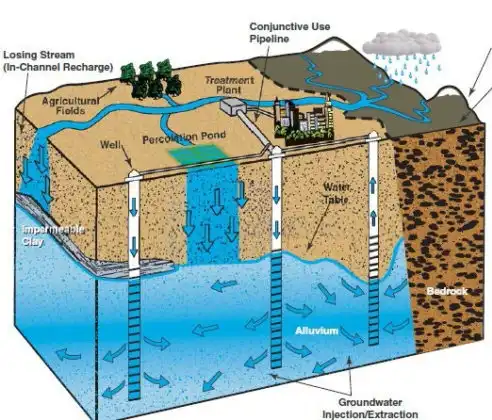
Desalination
Desalination is a process that takes away mineral components from saline water. More generally, desalination refers to the removal of salts and minerals from a target substance, as in soil desalination, which is an issue for agriculture. Saltwater is desalinated to produce water suitable for human consumption or irrigation. The by-product of the desalination process is brine. Desalination is used on many seagoing ships and submarines. Most of the modern interest in desalination is focused on the cost-effective provision of freshwater for human use. Along with recycled wastewater, it is one of the few rainfall-independent water sources.
The process may be used for municipal, industrial, or any commercial uses. Water desalination processes separate dissolved salts and other minerals from water. Feedwater sources may include brackish, seawater, wells, surface (rivers and streams), wastewater, and industrial feed and process waters. Membrane separation requires driving forces including pressure (applied and vapor), electric potential, and concentration to overcome natural osmotic pressures and effectively force water through membrane processes. As such, the technology is energy intensive and research is continually evolving to improve efficiency and reduce energy consumption.
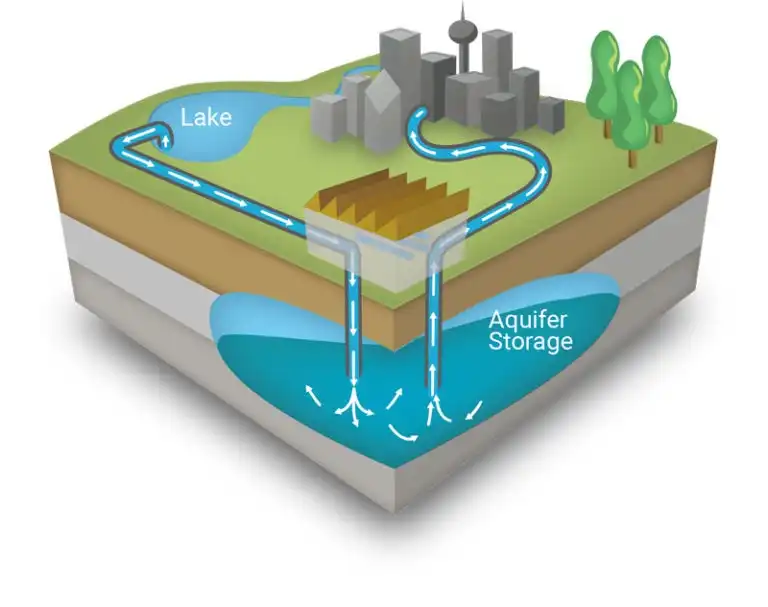
Conclusion
Water management methods should be adopted strategically, keeping in mind the need for the work to be implemented. Planning groups must address the needs of all water users, if feasible.
Info –
usgs.gov, researchgate.net, grac.org, netafimindia.com, fresnofloodcontrol.org, greywateraction.org, watereducation.org, Level.org.nz, groundwatergovernance.org,
dharawater.com, cityofpasadena.net, wbcsd.org, chaitanyaproducts.com, texaslivingwaters.org, power-technology.com, heritagelandbank.com
